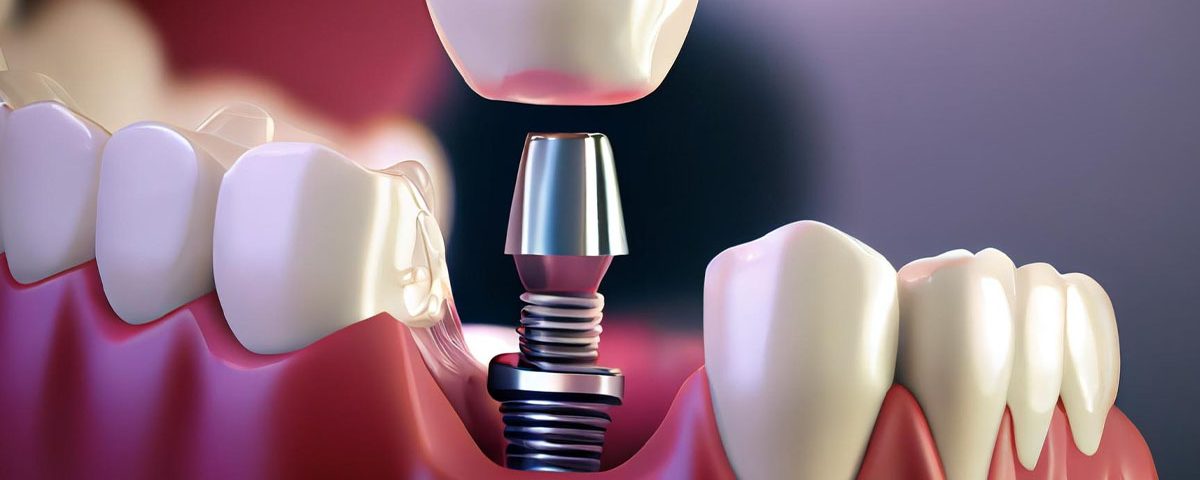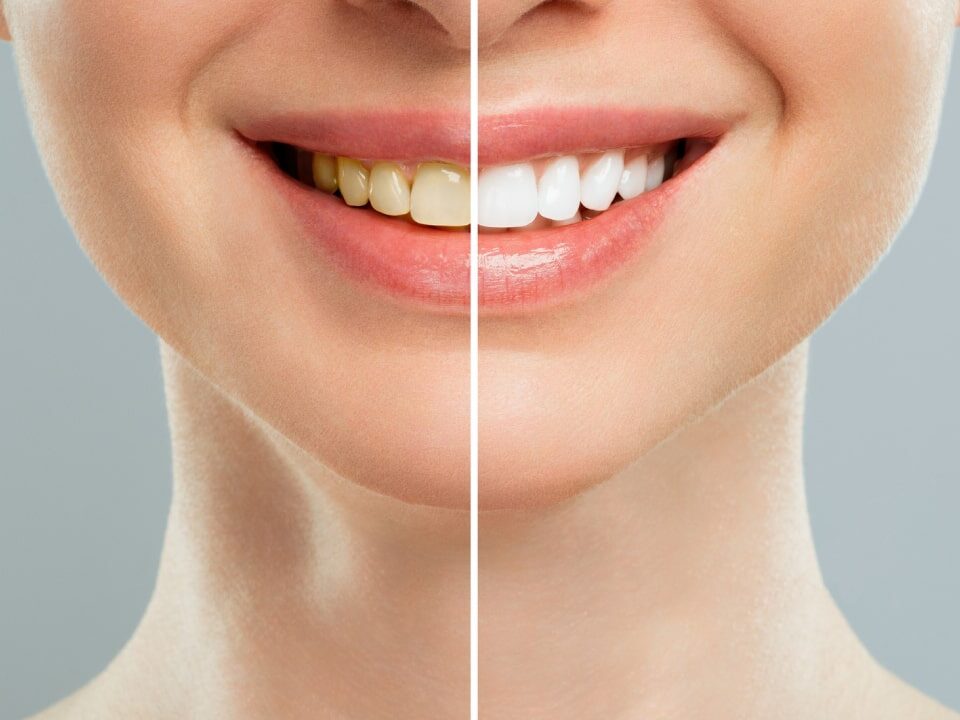
Can You Fix Bad Gums at Home?
November 22, 2023
How Much Pain is OK After a Root Canal?
November 29, 2023Dental implants are a revolutionary, long-lasting replacement for conventional bridges and dentures that don’t look fake. But what if you lose two teeth in a row? Do you know if one dental implant can support two teeth? The possibilities of using a single implant to replace two adjacent teeth will be discussed in this article, which will delve into the fascinating field of dental implants.
How Many Teeth Can 1 Implant Support?
Usually, one tooth is all that is needed to support a dental implant. The root of a natural tooth is in the jawbone, but dental implants are designed to replace individual teeth. Typically, one crown or other prosthetic tooth can be attached to an implant in this configuration. However, in some cases, one dental implant can support two teeth.
Can One Dental Implant Support 2 Teeth?
Yes. One Tooth implant can support two teeth in certain circumstances. Dental bridges are frequently used to accomplish this. When one or more teeth are missing, a bridge can be placed over the gap using dental implants as anchors. One crown is set onto the implant, and the other crown for the missing tooth extends out from the first crown.
Generally, two adjacent teeth are replaced using this approach. Whether or not one dental implant can support two teeth depends on factors such as:
- Location. The front teeth have less biting force, which is great for adjacent missing teeth.
- Jawbone Health. Putting an implant in your jaw requires a strong, dense jawbone.
- Dental Health. You’ll need good oral health, plus pre-existing conditions like gum disease, before you can get treatment.
- Space and Alignment. The neighboring teeth must be aligned properly and have enough space.
- Biting Forces. The implant should withstand biting forces if it’s for the back teeth.
- Aesthetics. Implant-supported teeth need to blend in with natural teeth.
- General Health. You can have a bad implant experience if you have diabetes.
- Implant Quality. Implants and prosthetics need the right materials and design to be successful.
How Far Should Dental Implants Be from Adjacent Teeth?
Now that you know one dental implant can support two teeth, let’s talk numbers. Dental implant placement in relation to neighboring teeth is essential for the functional and cosmetic success of the procedure.
Implant placement should follow the following guidelines:
- Minimum Distance. Generally speaking, the implant should be separated from the adjacent teeth by a minimum of 1.5 to 2 mm. This distance between teeth benefits the health of the jawbone and the teeth next to it.
- Inter-Implant Distance. When placing multiple implants in close proximity to one another, it is recommended that at least 3 mm be left between each implant. This distance must be maintained so that bone growth continues supporting each implant and bone loss does not occur between them.
Find Out More: Porcelain Veneers in Ahwatukee, Phoenix
How Many Teeth Can Two Implants Support?
A dental bridge uses two dental implants to anchor a replacement tooth or teeth in place. This configuration is often used as a solution when multiple teeth are missing in a row. What happens is this:
- Three to Four Teeth. You can replace three or four missing teeth with a bridge supported by two implants. A bridge with three or four crowns is anchored to the implants placed at the ends of the gap.
- Longer Bridges. Depending on factors like location in the mouth, implant strength, and jawbone condition, two dental implants side by side can support a longer bridge with more than four teeth.
- Implant-Supported Partial Dentures. You can also use two implants to anchor a removable partial denture that replaces more teeth.
How Many Implants Can Be Next to Each Other?
There’s no strict limit to how many implants you can place next to each other, but at least 3 mm needs to be maintained between them. The spacing promotes the long-term success of the implants and ensures the health of the jawbone and gums. How many implants can be placed adjacently depends on things like the size of the jaw, the specific area in the mouth, and your overall dental health.
Conclusion
The question of whether or not one dental implant can support two teeth does not have a black-and-white “yes” or “no” answer. It is conditional on the specifics of each person’s situation. The best treatment plan can only be determined after careful consultation with the best Ahwatukee dentist or oral surgeon.
Remember that the goal is to restore both the aesthetics and function of your smile while also protecting your teeth for the future.
FAQs
Can dental implants affect adjacent teeth?
Yes, if implant placement isn’t right, adjacent teeth can be affected. If placed incorrectly, neighboring teeth may be damaged, or there may be insufficient space for proper cleaning.
What is the minimum distance between teeth for an implant?
In most cases, 1.5 to 2 mm is the minimum distance between implants and adjacent teeth. Maintaining this spacing helps keep adjacent teeth and jawbones healthy.
How many teeth can a single implant hold?
One tooth can usually be supported by one implant. A dental bridge can sometimes support two teeth with one implant, though.
Why does my adjacent tooth hurt after implant placement?
Inflammation, infection, or pressure from the implant can cause pain in an adjacent tooth after implant placement. A dentist can give you a proper diagnosis.
How many implants do you need for 2 teeth?
One implant is usually enough to replace two teeth using a bridge. In some cases, two implants may be needed to replace two teeth or more support.
Can one implant support two crowns?
Sometimes, two crowns can be attached to the same dental implant. A dental bridge is the common method for accomplishing this.





